Krakow Tatra Mountains: top things to see and do in the region
The Tatras majestic, beautiful, and full of incredible views – are mountains that everyone should visit at least once in their lifetime! Straddling the border between Poland and Slovakia, they are somewhat unfairly more extensive on the side of our southern neighbours. This range represents the highest mountain chain in the Carpathians, and is also the tallest between the Alps and the distant Ural and Caucasus ranges. In Poland, it’s the only place where you can truly experience an alpine landscape. It’s no wonder that the Tatra mountains have long attracted tourists eager for mountain adventures, scenic hiking trails, and wild nature.
If you're planning a visit to the Tatras, don’t forget to explore what to do in Krakow as well. Krakow is a gateway to the region, offering historical landmarks, cultural experiences, and activities that complement the natural beauty of the Tatras.
When planning a trip to the Tatra mountains, it’s worth considering a convenient mode of transport, especially if you’re flying into Krakow. Renting a car is an excellent option, allowing you to travel freely around the region. Kaizen Rent offers car rental in Krakow in two locations:
- Radzikowskiego 5a, 31-305 Krakow, Poland.
- Kapitana Mieczysława Medweckiego 1, 32-083 Balice (Airport)
This location is especially convenient for those looking for car rental at Krakow airport, providing easy access to car rental in Poland for travellers.
Getting started
The Tatra mountains are a unique-protected area, with both the Polish and Slovak sides designated as national parks: Tatrzański Park Narodowy (TPN) and TANAP (Tatranský národný park), respectively. Additionally, this area is part of the UNESCO Biosphere Reserves network, highlighting its extraordinary natural value. Over time, the Tatra National Park has changed due to human activities, impacting its ecological balance. Protecting the park's biodiversity and managing human presence is crucial to preserving its delicate ecosystems.
When to visit
The best time to visit the Krakow Tatra Mountains largely depends on what you’re interested in and the activities you have planned. The peak tourist season runs from June to September, when the weather is warm and stable, and the days are long. This is the ideal time for those who want to enjoy hiking, trekking, and exploring the many hiking trails of the Tatra National Park. The popular blue route and red route are well-travelled during this time, offering incredible views and a great experience for all. However, be prepared for crowds on the trails, as this is also the busiest time of the year, especially around well-known spots like Morskie Oko Lake, Five Lakes Valley, and Kasprowy Wierch.
For those who prefer a quieter experience, spring (April to May) and autumn (September to October) are excellent times to visit. The weather is mild, the trails are less crowded, and the changing seasons offer stunning natural scenery. Spring brings blooming flowers and fresh greenery, while autumn is a riot of colours with golden leaves and crisp air. Hiking in the Western Tatra Mountains during this time allows for a fantastic mix of yellow trails and green trails, leading to beautiful views of the valleys and peaks. The Czarny Staw (Black Pond) and Black Lake are especially stunning during autumn, offering a peaceful atmosphere.
If winter sports are more your style, then December to February is the time to go. The Tatra Mountains transform into a winter wonderland, perfect for skiing, snowboarding, and ski touring. Snow blankets the Five Polish Ponds and Five Lakes Valley, making it an ideal time for ski touring and snowshoeing. Just keep in mind that the weather can be unpredictable, so always check the forecast before heading out. The Murowaniec Hut is a great refuge for winter travellers, offering shelter and warm meals after a day of exploring the Tatra mountains.
Regardless of the season, the Tatra Mountains promise a memorable experience. You can take local buses or a cable car to access popular spots like Kasprowy Wierch or Zakopane Centre, making it easier to start your hike from well-known trailheads. The entrance fee to the Tatra National Park is required, but the beautiful view and diverse trails more than make up for it. If you're interested in exploring more incredible views, make sure to visit Giewont Peak and the highest peak of the Polish Tatra Mountains.
What to do in the Polish Tatra Mountains: exploring Poland's natural paradise?
The Tatra Mountains, located near Krakow, are one of Poland's most stunning natural treasures. Known for their breathtaking landscapes, these mountains have long been a playground for adventurers, nature lovers, and hiking enthusiasts. The variety of hiking trails available caters to all levels of hikers, from easy walks to more challenging climbs. Whether you're looking for an easy hike, moderate routes, or tackling one of the highest peaks, the Polish Tatras are the ideal destination.
The best hiking trails in the Krakow Tatras Mountains:
-
Dolina Pięciu Stawów Polskich through Dolina Roztoki – This lakes valley is a true gem in the Tatra National Park, featuring crystal-clear lakes surrounded by towering peaks. The blue trail leads hikers through a landscape filled with energy and beauty. Spending a whole day here allows visitors to fully appreciate the stunning views and tranquil atmosphere. For those seeking a more challenging journey, an alternative route is available depending on weather conditions and trail difficulty.
-
Dolina Chochołowska – This valley is the cultural heart of the Tatra National Park. It is known for its rich history, geological formations, and traditional mountain huts. The green trail meanders through the valley, showcasing picturesque landscapes and leading hikers past charming shepherd huts and wildflower-filled meadows. For those looking for a peaceful experience, this trail is an excellent option.
-
Wielka Siklawa – This waterfall is one of the most impressive natural wonders in the Polish Tatras. Located near Czarny Staw and Morskie Oko - this area is perfect for a day hike. The hike to the waterfall offers stunning views of the Polish ponds and surrounding valleys. Many hiking trails, including the blue trail, lead to this mesmerizing spot, offering the perfect opportunity to take in wonderful views of the surrounding mountains.
-
Morskie Oko Lake – Often referred to as the jewel of the Tatras, Morskie Oko is one of the most picturesque spots in the Polish mountains. The lake, surrounded by majestic peaks, captivates visitors with its crystal-clear waters. The trail to the lake is relatively easy, making it a great option for families or those on a day hike. The nearby Murowaniec hut is a perfect place to stop for a break and enjoy local specialities like potato pancakes. The area around Morskie Oko is ideal for relaxation and soaking in the beauty of the High Tatras.
Which peaks should you climb in the Tatras? Kasprowy Wierch, Rysy and Giewont peak
-
Giewont – known as the "guardian of the Tatra Mountains", this symbolic peak offers a mix of challenge and reward. The yellow trail to the summit is one of the most popular hikes, though it is best suited for experienced hikers due to its steepness. The 15-meter-high cross at the summit is a popular destination for pilgrims and visitors alike. The red trail here leads hikers through rocky paths and offers incredible views of the High Tatras. Be cautious of falling rocks and the potential dangers during thunderstorms.
-
Rysy – As the highest peak in Poland, Rysy is a rewarding challenge for ambitious hikers. The ascent can be demanding, requiring endurance and skill, but the beauty views from the summit, with panoramas of the Polish Tatra Mountains and beyond, make it all totally worth it. The hike starts from Morskie Oko, where visitors can take a local bus from the train station in Zakopane or choose to hike along the asphalt road to the lake before continuing on the trail to the summit.
-
Kasprowy Wierch – This peak is accessible via the cable car from Zakopane, offering an amazing view of the entire Tatra range. For those into ski touring, Kasprowy Wierch is a popular spot, offering several routes for ski touring enthusiasts during the winter months.
Why is it called the Five Polish Ponds when there are actually six lakes?
Nestled in the Tatra Mountains, the Five Lakes Valley is charmingly named after five of its lakes, even though it actually has six. This quirky naming is probably because of old naming traditions, where one of the lakes—Wole Oko (the Eye of the Ox)—was seen as too tiny to be counted among the big ones. The main stars of the show are Wielki Staw, Mały Staw, Przedni Staw, Czarny Staw, and Zadni Staw.
There’s no doubt about it, Dolina Pięciu Stawów Polskich is a gem in the Tatra Mountains! This charming spot enchants visitors all year round with its beauty views and memorable adventures. The best way to start the adventure kicks off at the car park in Palenica Białczańska, just past Łysa Polana. During the busy season, it’s a good idea to book your parking spot ahead of time since it fills up fast. You can make reservations online, where you can also see if there are any free spaces available.
You can also get there by public transport – minibuses from the PKS station area in Zakopane head to Palenica Białczańska regularly. Just hop on one marked “Łysa Polana” or “Morskie Oko.” The ride takes about 30 minutes. Once you arrive, remember there’s a small entrance fee to the Tatra National Park for all visitors.
Thinking about which path to take to Dolina Pięciu Stawów Polskich? You’re in for a treat, as there are several delightful ways to get there! The most popular and quickest route is the green trail through Dolina Roztoki. On your way, you’ll pass the charming Wodogrzmoty Mickiewicza and then make your way to the tallest waterfall in the Krakow Tatra Mountains – Siklawa. Here, you can enjoy the refreshing mist and take a breather while soaking in the stunning natural beauty. As you continue, the trail leads to Wielki Staw and the PTTK mountain shelter, where you simply must try the local szarotka. While the route isn’t technically challenging, it does call for a good level of fitness – the stretch through Dolina Roztoki is quite long and has a significant climb.
Alternatively, you can reach Dolina Pięciu Stawów via Morskie Oko. You can opt for the route through Szpiglasowa Przełęcz, which offers a short and easy section with chains, or take the trail through Świstówka, which is closed in winter due to avalanche risks. For those seeking a challenge, the most demanding option is hiking Tatras Poland through Dolina Gąsienicowa and Orla Perć – this trail is for the experienced and those comfortable with heights.
When the weather gets cooler, keep in mind that ice can sneak up on you above Siklawa. Those smooth, post-glacial rocks can be quite tricky, and there have been some unfortunate mishaps there before. If things get a bit dicey, it’s a good idea to take the black trail that safely skirts around this part.
Three routes into the Five Lakes Valley:
Difficulty level: Easy - red trail
-
Palenica Białczańska – Wodogrzmoty Mickiewicza – Włosienica – Morskie Oko Shelter – Morskie Oko. Round-trip time: 4h 10 min, Distance: 15.6 km
Difficulty level: Moderate/Difficult - red trail - blue trail - yellow trail - red trail
-
Palenica Białczańska – Wodogrzmoty Mickiewicza – Włosienica – Trail Junction (turn to Dolina Roztoki) – Shelter in the Valley of the Five Polish Lakes - Świstówka Pass - Morskie Oko lake. Round-trip time: 6h, Distance: 17 km
Difficulty level: Very difficult (requires good preparation) - red trail
-
Palenica Białczańska – Wodogrzmoty Mickiewicza – Włosienica – Morskie Oko Shelter – Black Pond under Rysy - Rysy - Morskie Oko. Round-trip time: 10h - 12h, Distance: 25 km
Why the peak of Giewont is the most famous one in the Krakow Tatra Mountains?
Giewont, although one of the most iconic peaks in the Tatras, is not the highest. Nonetheless, it remains a symbol of Zakopane centre and one of the most visited spots in the Polish mountains. Its majestic silhouette, resembling a sleeping knight, has captivated tourists and enthusiasts of Tatra legends for centuries.
Giewont is a massif composed of three main peaks: Wielki Giewont (1,895 meters above sea level), Długi Giewont (1,868 meters above sea level), and Mały Giewont (1,739 meters above sea level).
The tallest, Wielki Giewont, towers over the area, and it is here that the famous 15-metre metal cross, erected in 1901, stands. During summer, the trail to the summit is extremely popular—alongside Kasprowy Wierch and Morskie Oko, it ranks among the most frequented sites in the Tatras. Visitors need not worry about finding accommodations, as there are plenty of affordable guesthouses and hostels available in the area.
Despite its popularity, Giewont is also one of the most dangerous peaks in the Tatras. To date, over 70 people have lost their lives on its slopes. The narrow and steep sections near the summit are particularly treacherous, often resulting in long queues of tourists during peak season. Thunderstorms pose a significant threat as well—the metal cross and chains attract lightning, leading to a tragic storm in 2019 that claimed the lives of 4 people and injured over 150.
The descents can also be perilous. Particularly tricky is the area between Wielki and Mały Giewont, known as Giewoncka Przełęcz. From here, the Kirkor Gully—a seemingly harmless path—has tempted many tourists to take a shortcut to the Strążyska Valley. Unfortunately, numerous fatal accidents highlight the dangers of straying from marked hiking trails.
When planning a trip to Giewont, it’s crucial to exercise caution. Checking the weather forecast, wearing appropriate footwear, and familiarizing yourself with the trail are essential for a safe hike. While the mountains can be awe-inspiring, they also demand respect and prudence.
In addition to its natural beauty, Giewont is steeped in legend. The mountain’s shape, resembling a sleeping knight, is tied to one of the most popular Tatra legends. The most well-known version tells of a knight who will awaken and rise to battle when Poland is in danger. A more elaborate version speaks of entire armies of warriors sleeping in caves and grottos within the Giewont massif, who too will awaken to defend the country when it faces peril. These legends add an enchanting layer of mystery to this majestic peak.
Routes to the Giewont:
Difficulty level: Moderate - blue trail
-
Kuźnice - Polana Kalatówki - Dolina Kondratowa - Przełęcz Kondracka - Giewont. Round-trip time: 4h 30 min, Distance: 10 km
Difficulty level: Moderate/Difficult - yellow trail
-
Gronik - Dolina Małej Łączki - Przełęcz Kondracka - Giewont. Round-trip time: 5h, Distance: 9 km
Difficulty level: Very difficult - red trail
-
Kasprowy Wierch (cable car entry or approach) - Czerwone Wierchy - Przełęcz Kondracka - Giewont. Round-trip time: 7h, Distance: 12 km
Dolina Chochołowska - Is it the largest valley in the Tatra Mountains?
Dolina Chochołowska is the largest and longest valley in the Polish Tatras, stretching over 10 kilometres in length. Situated at the western edge of Tatra National Park, it offers an excellent setting for both family strolls and ambitious mountain treks. The valley features various routes catering to different preferences, from gentle paths suitable for families to more challenging trails for seasoned hikers. Once you cross it, you can venture into the Slovak side of the Tatras.
Dolina Chochołowska is a perfect destination for everyone—from families with children and seniors to dog lovers, as it’s one of the few places in the Tatras where you can walk with your dog. The trail running along the valley floor is relatively gentle, though it might be slightly challenging for parents with strollers, especially towards the end near the mountain hut.
For more seasoned hikers, Dolina Chochołowska serves as a great starting point for nearby peaks like Grześ, Wołowiec, Trzydniowiański Wierch, or even Rohacze in Slovakia. You can also reach Starorobociański Wierch, Ornak, and Bystra—the highest peak in the Polish Western Tatras—although for this route, starting from Dolina Kościeliska is often recommended.
Getting to the valley from Zakopane’s center takes about 15 minutes. For those driving, large parking lots are available, and the parking fee is the same across all lots (as of 2025, it was 20 PLN per day).
A fascinating attraction, particularly for families with children, is the Tourist Train Rakoń, which operates in the summer and takes tourists to Polana Huciska, covering almost half the valley (about 3.5 km). It’s a great way to save energy for the rest of the hike. Upon reaching the train’s final stop, you can take a highlander carriage that brings tourists almost to the mountain hut’s doorstep.
Interestingly, although Dolina Chochołowska is within the boundaries of Tatra National Park, it doesn’t belong to it. It is owned by the Forest Community of Eight Villages, established in 1819, which includes Ciche, Czarny Dunajec, Chochołów, Dzianisz, Koniówka, Podczerwone, Witów, and Wróblówka. This community manages the forest economy, conducts sheep grazing, and collects entrance fees to the valley.
Just beyond the valley’s entrance lies Siwa Polana—a large, open space about 900 meters long and up to 350 meters wide in places. It’s a spot where sheep are traditionally grazed, and in the shepherd huts, you can taste authentic highlander products like oscypek and bundz. In the past, Dolina Chochołowska was the largest pastoral center in the Polish Tatras and once a site for iron ore extraction, which was transported along the Droga pod Reglami to the forges in Kuźnice.
Dolina Chochołowska is stunningly picturesque in every season—in spring, it attracts tourists with blooming crocuses, in summer it invites mountain excursions, in autumn it glows with the gold of beeches and larches
Three ways to reach Dolina Chochołowska:
Difficulty level: Moderate - green trail
-
Siwa Polana - Schornisko PTTK na Polanie hochołowskiej. Round-trip time: 4h 30 min, Distance: 15 km
Difficulty level: Moderate/Difficult - yellow trail
-
Gronik - Dolina Małej Łączki - Przełęcz Kondracka - Giewont. Round-trip time: 5h, Distance: 9 km
Difficulty level: Very difficult - red trail
-
Kasprowy Wierch (cable car entry or approach) - Czerwone Wierchy - Przełęcz Kondracka - Giewont. Round-trip time: 7h, Distance: 12 km
Why should you definitely check out the Siklawa waterfall when visiting the Cracow Tatra Mountains?
Wielka Siklawa, hidden in the heart of the High Tatras within the Roztoka Valley, holds the title of the largest waterfall in Poland. Its thunderous waters cascade from a height of approximately 65–70 meters, creating a mesmerizing mist that often shimmers with rainbows in sunny weather. The height of the waterfall makes it a mesmerizing sight and a must-visit spot in the Tatras. Be sure to pause and relax on the nearby rocks to take in the view, though it’s challenging to hold a conversation here—the roar of the water is truly powerful. The most beautiful moments are experienced right after the rain when the sun illuminates the cascading water. Due to its size, this waterfall is also known as the Great Siklawa and was historically referred to as Siklawa Woda. It’s worth noting that it is often confused with Siklawica, located in the Strążyska Valley beneath Giewont in the Western Tatras.
Although Siklawa is the tallest waterfall in Poland, it is not the highest in the Tatras. That title belongs to Ciężka Siklawa, situated in the Slovak High Tatras, where the water falls from a height of about 100 meters. For many, Wielka Siklawa is one of the must-see spots in the Tatras, and it’s easy to see why. We invite you to embark on a unique journey toward this remarkable waterfall.
Top paths to Siklawa Waterfall:
Difficulty level: Moderate - red trail → green trail
-
Palenica Białczańska – Roztoka Valley – Five Ponds Valley – Waterfall. Round-trip time: 4h 30 min, Distance: 13 km
Difficulty level: Moderate/Difficult - red trail → blue trail
-
Morskie Oko – Świstówka Roztocka – Five Lakes Valley – Waterfall. Round-trip time: 7h, Distance: 14 km
Difficulty level: Very difficult - blue trail → yellow trail
-
Hala Gąsienicowa – Zawrat – Valley of Five Ponds – Siklawa. Round-trip time: 9h, Distance: 17 km
Looking for a challenge in the Tatra National Park? Climb the highest mountain peak, Rysy!
Rysy is one of the most popular yet challenging destinations in the Tatras, particularly among mountain hiking enthusiasts. Although the trail to Rysy is not the easiest, its difficulty largely depends on the hiker's fitness level and proper preparation. For many, it represents an unforgettable challenge. It's important to remember that chains are an integral part of the landscape on the trails leading to the summit, enhancing both the route's appeal and hiker safety. While less experienced hikers might find them intimidating, these chains are essential for navigating the difficult and exposed sections of the trail. It's crucial to use the chains one person at a time, ensuring the previous user has cleared them before proceeding.
Rysy is the highest peak on the Polish side of the Tatras, reaching 2,499 meters. It holds a special place in the hearts of tourists, serving as a coveted goal for many hikes. It's worth noting that Rysy has three summits. The Polish summit, standing at 2,499 meters, is the middle one. On the Slovak side, there are two more—the highest at 2,501 meters, and the lowest, slightly separated from the others, at 2,473 meters. For those collecting peaks as part of the Crown of Polish Mountains, Rysy is a must-visit, as it's the highest you can go in the Polish Tatras. Additionally, the highest peak entirely in Poland is Kozi Wierch, located on the Orla Perć.
When planning a trip to Rysy, tourists have two main options for ascent: through Poland or Slovakia. The Polish route involves a popular asphalt path, passing Sea Eye (Morskie Oko), and then climbing through Black Pond (Czarny Staw) towards the summit. This option is more challenging, requiring better fitness and technical preparation. This route features more chains and greater exposure, making it more demanding. Conversely, the Slovak route, passing through the Chata pod Rysami shelter, is easier technically and shorter. Interestingly, the rules for the Crown of Polish Mountains do not specify which path to take to reach Rysy, so the choice depends on the tourist's preferences.
The name Rysy comes from the characteristic, golden-hued slopes of the massif, which also includes Niższe Rysy, Zabi Szczyt Wyzyni, and Zabi Mnich. These peaks create one of the most recognizable panoramas in the Tatras, attracting both tourists and mountain legend enthusiasts. Despite its popularity, Rysy demands respect and proper preparation—only then can we fully appreciate its majesty and beauty.
Day hikes in the Rysy Mountains:
Difficulty level: Difficult - red → blue trail
-
Palenica Białczańska – Morskie Oko lake – Rysy Mountains. Round-trip time: 9h, Distance: 22 km
Difficulty level: Very Difficult - green trail → blue trail
-
Wlotnica – Five Lakes Valley – Rysy. Round-trip time: 10h, Distance: 20 km
Difficulty level: Very difficult - blue trail → red trail
-
Zawrat – Rysy. Round-trip time: 10-12h, Distance: 22 km
Are you looking for magical places in the Tatra Mountains? Be sure to visit Morskie Oko Lake!
If you’re planning a trip to Morskie Oko lake, it’s truly worth the effort! The first step is reaching the Tatra National Park, specifically the parking area at Palenica Białczańska. Many trails start here. This is where your adventure in the Tatras typically begins. You’ll find portable toilets and a food stand there as well. The drive from Zakopane’s centre takes about 35 minutes, though it can be significantly longer during peak season—on the busiest days, the trail can see tens of thousands of tourists! It’s wise to consider this when planning your visit, and aim for weekdays or off-peak times.
Some visitors have opted for alternative routes to reach Morskie Oko based on accessibility and views.
If you’re driving from Krakow with a rental from Kaizen Rent, you can bypass Zakopane and turn towards Bukowina Tatrzańska in Poronin. This route not only offers a quicker journey, but also breathtaking views—just past Bukowina, you’ll find several excellent viewpoints worth stopping by. The drive from Poronin takes around 25 minutes.
To get from Zakopane to Palenica Białczańska by car, the easiest route is via Oswald Balzer Road. Start at the roundabout of St. John Paul II, head towards Jaszczurowka, then Cyrhla, and continue to Brzeziny. At road number 960, take a right turn, and you'll reach Łysa Polana and the parking at Palenica Białczańska. It's about 22 km from Zakopane.
Parking at Morskie Oko can get busy, especially during the season. It's a good idea to buy your ticket online in advance. It costs PLN 36 per day, and booking a few days early might save you some money.
Morskie Oko and the picturesque Valley of the Fish Stream are among the most enchanting spots in the Tatras, not just on the Polish side. It’s no surprise that many tourists choose this location for their first hike in these mountains. It’s an ideal destination for novice hikers, but even seasoned mountain enthusiasts often return here or use Morskie Oko as a stopover on a longer trek, while others see it as the main goal of their trip—regardless of your plans, take a moment to simply soak in the landscape.
Overlooking Morskie Oko lake are the Mięguszowieckie Peaks, whose nearly vertical walls rise a thousand meters above the lake’s surface. Don’t forget about Mnich—a distinctive peak that seems almost unattainable for climbers from this perspective. Legend has it that it’s a petrified monk from the Czerwony Klasztor in Pieniny. These extraordinary views make this place one of the most recognizable in the Polish Tatras.
Whether you’re visiting lake for the first time or returning once more, one thing is certain—it always leaves an impression. Hit the trail and allow yourself a moment of awe at one of the most beautiful places in the Polish Tatras!
Two routes to the Morskie Oko
Difficulty level: Easy - red route
-
Palenica Białczańska – Mickiewicz Waterfalls – Shelter on Morskie Oko. Round-trip time: 2,5h Distance: 8,5 km
Difficulty level: Difficult - blue → black → green → red route
-
Palenica Białczańska - Mickiewicz Waterfalls - Roztoka Valley - Shelter in the Valley of Five Lakes - Świstówka Roztocka - Morskie Oko. Round-trip time: 5h, Distance: 14 km
Before setting off for the Tatras, what should you remember?
-
Planning Your route
- Choose a hiking trail that suits your skill level and the weather conditions. The same trail might be a bit challenging for you and your family.
- Check the trail's length, elevation, and difficulty level.
- Check out the nearby mountain huts where you can relax and take a break.
- Keep emergency numbers handy: TOPR - 985 or 601 100 300.
- Download the Rescue app to facilitate calling for help.
-
Weather forecast
- The weather conditions in the Tatras can change rapidly, so carrying a paper map and checking forecasts is essential.
- Beware of summer storms—avoid peaks in the afternoon.
-
Proper equipment
- Footwear - wear trekking shoes with good soles and ankle support.
- Clothing - dress in layers, and include rain and wind protection (rain jacket, warm sweatshirt).
- Headgear and gloves - useful even in summer at higher altitudes.
- Head torch - in case you return after dark.
- Map and compass/GPS - don't rely solely on your phone.
- Some trails require an entrance fee to the Tatra National Park.
-
Food and water
- Carry at least 1.5-2 litres of water per person, more in hot weather.
- Pack energy snacks: nuts, chocolate, sandwiches.
-
Respect for nature
- Stick to the trails—deviating is dangerous and harms the environment.
- Don't feed the wildlife or leave rubbish behind.
- Maintain quiet—the Tatras are home to many rare species.
-
Start early on the trail
- Begin your hike early in the morning to avoid crowds and afternoon storms.
- Plan your return to avoid descending in the dark.
Take a moment to pause in the heart of the Tatra Mountains - Zakopane.
Zakopane, known as the "winter capital of Poland," is the perfect spot for international and other tourists eager to explore the beauty of the Tatra Mountains. The town offers a unique vibe, blending highlander culture with breathtaking views. Visiting the Tatras is a chance to admire Poland's highest point, hike trails like Morskie Oko or Giewont, and taste traditional highlander cuisine. Zakopane also draws visitors with attractions like Krupówki—a lively street filled with shops and restaurants—and the distinctive Zakopane style seen in its wooden architecture. It's a place that will delight nature lovers, winter sports enthusiasts, and fans of local traditions alike. At night, you can enjoy the charming, lit-up surroundings or unwind in one of Zakopane's thermal baths or pools. For anyone wondering what to do in Zakopane, this charming town offers plenty of activities and attractions to complement your mountain adventure.
New attraction in the Tatra Mountains
The Sky Walk in Poronin, a charming spot near Zakopane, is one of the most exciting attractions in the area. Located on Polana Zgorzelisko in Małe Ciche, this unique structure lets you stroll high above the ground and enjoy the Tatra Mountains from a whole new angle. The Sky Walk Serce Poronina is set to open in the second half of April 2025.
Summary
The Polish Tatra Mountains offer a wealth of stunning attractions and outdoor activities, making it a must-visit destination for nature lovers and adventure seekers. The region is known for its hiking trails, including the famous yellow trail and red trail, with options for all skill levels, from easy day hikes to challenging routes for experienced hikers. Notable sites include the picturesque Morskie Oko, the Five Lakes Valley, and Black Lake, all offering incredible views of the High Tatras. These are just some of the must-see mountains in Poland that everyone should experience.
Visitors can take the cable car to Kasprowy Wierch for panoramic views or explore the Tatra National Park, home to diverse wildlife and dramatic landscapes. Mountain huts like Murowaniec Hut provide rest spots, while the park’s entrance fee helps preserve the area’s natural beauty. For those seeking relaxation, Zakopane offers local specialties like potato pancakes and the famous oscypek cheese, along with the opportunity to visit attractions like the Wieliczka Salt Mine. It’s one of the most beautiful places in Poland, perfect for a weekend in Poland getaway.
With organized tours, buses, and easily accessible trails, the region is perfect for anyone looking to connect with nature, whether through hiking the Tatras, skiing, or simply enjoying the breathtaking scenery. Whether you’re exploring Zakopane’s old town or love hiking to Giewont Peak, the Tatra Mountains provide a range of experiences that highlight Poland’s rich natural and cultural heritage.

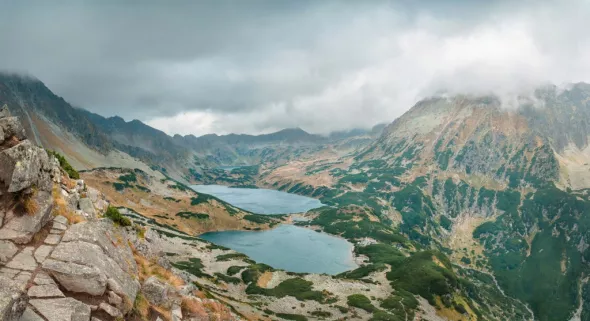
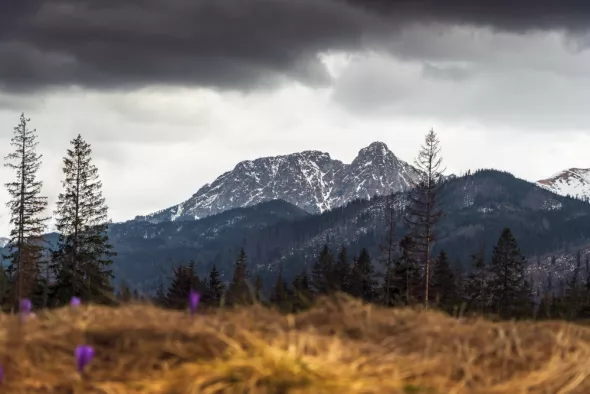
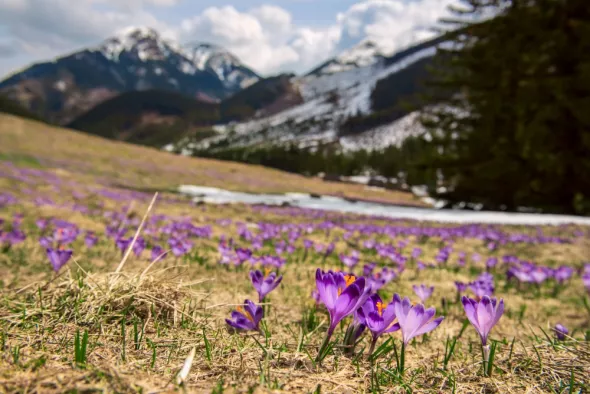
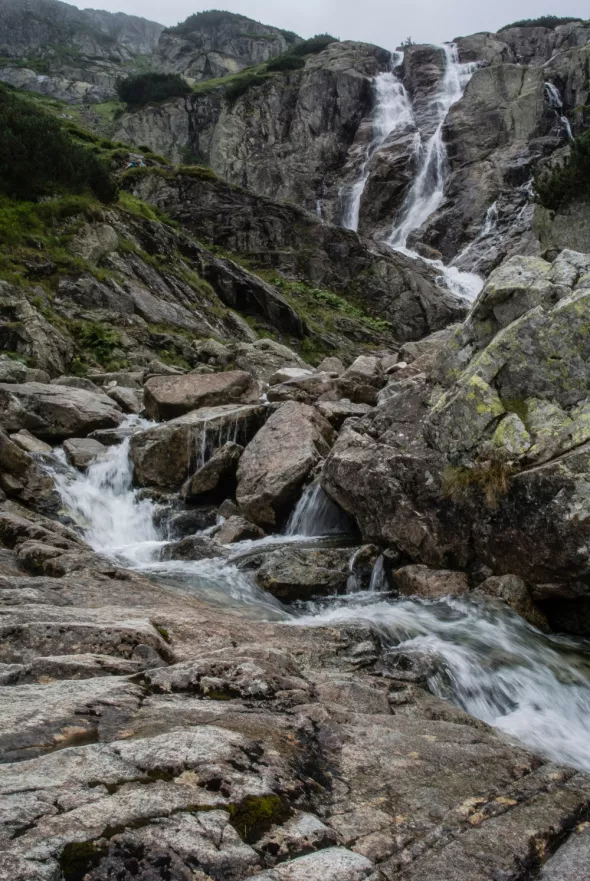

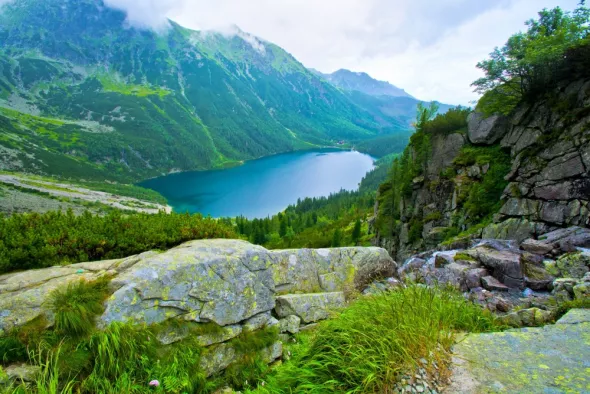

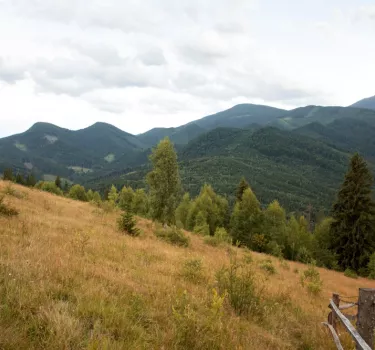
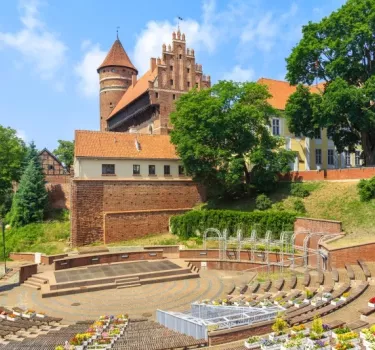
Comments (0) Show comments